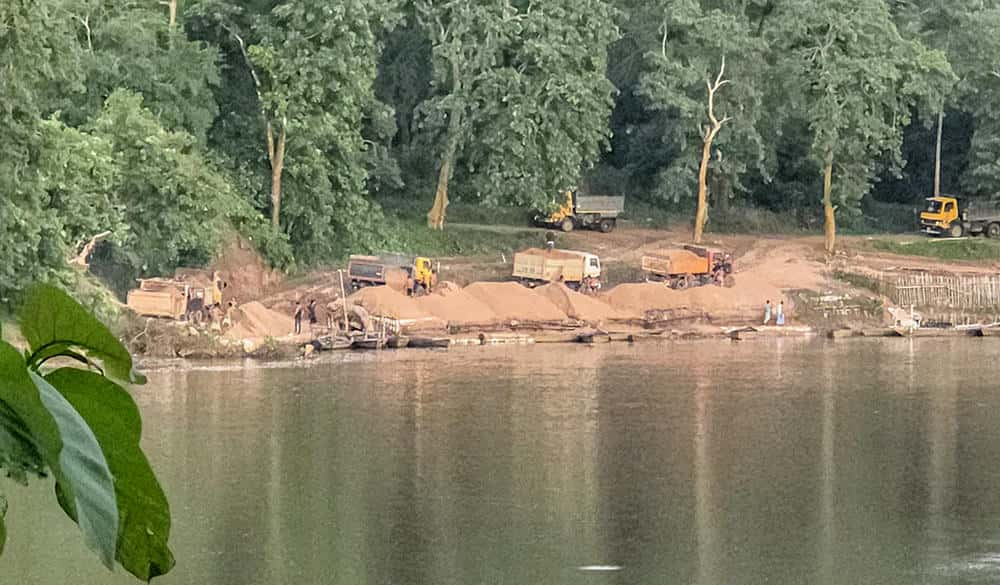Sand mafia strips Kulsi River bare, pushes river dolphins to brink of extinction

The Kulsi River is being systematically gutted by a powerful sand mining cartel operating openly under the nose of forest authorities in Assam’s West Kamrup district. Each day, 50 to 70 trucks haul illegally mined sand from the riverbed to Guwahati and beyond, while enforcement agencies remain silent and inactive.
The environmental cost is devastating. The Kulsi River—a tributary of the Brahmaputra—is one of the last remaining habitats of the critically endangered Ganges River Dolphin, known locally as Xihu. A 2024 survey by the Wildlife Institute of India estimated the dolphin population in the 61-kilometre stretch at just 20 individuals. Continuous sand extraction has disrupted river flow, destroyed breeding grounds, and left these rare aquatic mammals on the edge of extinction.

In an irony that has angered conservationists, the Van Mahotsav closing ceremony was recently held at Kulsi itself, attended by Forest Minister Chandra Mohan Patowary and PCCF Sandeep Kumar. The very next day, sand mining operations resumed, business as usual—just a few kilometres from where top officials had pledged to protect the environment.
The area falls under the Western Assam Wildlife Division, encompassing sensitive forest ranges such as Loharghat, Kulsi, Bamunigaon, and Nagarbera. Yet illegal operations continue barely 1 to 5 km from the Kulsi Forest Range Office and only 13 km from the divisional headquarters, highlighting the glaring failure of enforcement.

The Indian Forest Act, 1927, and the Forest (Conservation) Act, 1980, clearly prohibit non-forest use of forest land—including mining—without central clearance. The Supreme Court of India has also banned mining in key wildlife zones. Despite these legal safeguards, the sand mafia operates with impunity.
The destruction doesn’t stop at the river. Illegal deforestation and charcoal production have accelerated under the same forest division. Trees are being cut down in reserve areas, converted into charcoal, and smuggled out along the Brahmaputra’s edge. This deforestation has triggered increased human-wildlife conflict, as displaced wild elephants now raid nearby villages, destroying crops, orchards, and homes.
The ripple effects on agriculture have been severe. Orange orchards in the area are in decline, and the famed Muga silk industry—sensitive to microclimatic changes—is seeing a sharp drop in productivity.
As smugglers profit, the ecosystem collapses. The Kulsi River is bleeding, its dolphins dying, its forests shrinking, and its communities suffering. Yet the forest department has failed to act. Conservation laws, court rulings, and public outcry have all been ignored.
With the sand mafia operating at full throttle and oversight mechanisms in shambles, Kulsi may soon lose not just its river dolphins—but its future.

Leave a Reply